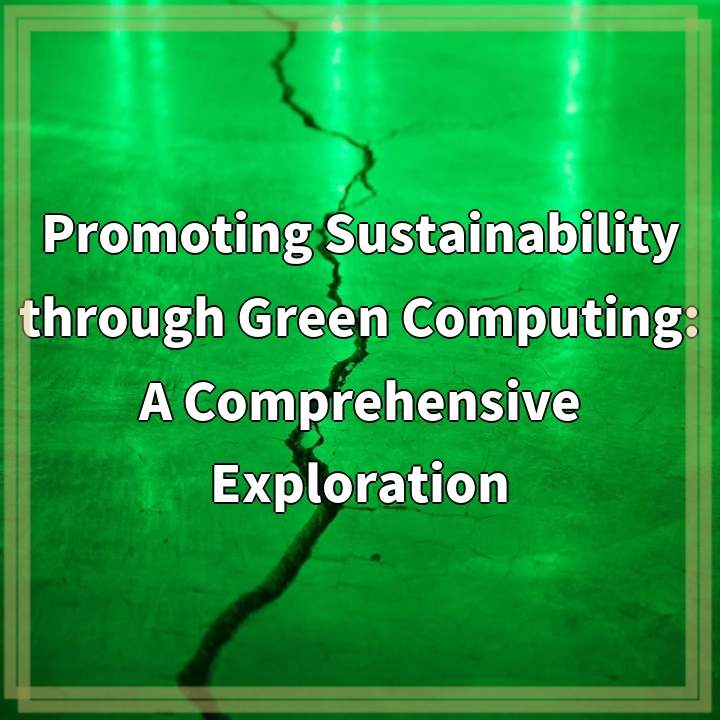
What is Green Computing?
Green Computing, also known as Green IT, refers to the practice of designing, manufacturing, using, and disposing of computers, hardware, and software in an environmentally friendly manner. It involves using technology efficiently, reducing waste, and minimizing the environmental impact of computing systems throughout their lifecycle.
Real-World Problems
1. Energy Consumption:
One of the significant challenges associated with traditional computing systems is their high energy consumption. Data centers and individual computing devices consume a massive amount of electricity, contributing to greenhouse gas emissions and putting strain on energy resources. The continual growth of digital services and the increasing demand for computing power exacerbate this problem.
2. Electronic Waste:
The rapid pace of technological advancements leads to the frequent disposal of outdated computer equipment. Electronic waste, or e-waste, contains hazardous materials like lead, mercury, and cadmium that pose significant risks to human health and the environment if not handled properly. Poor disposal practices, such as incineration or landfilling, can contaminate soil, water, and air, causing pollution and potential harm to ecosystems.
3. Manufacturing Processes:
The production of computers and electronic devices involves resource-intensive processes that contribute to pollution and resource depletion. Manufacturing operations produce greenhouse gas emissions, utilize non-renewable resources, and generate toxic byproducts. Additionally, the extraction of raw materials such as rare minerals often involves unethical practices and human rights abuses.
4. Data Center Carbon Footprint:
Data centers, which store and process vast amounts of digital data, have a substantial carbon footprint. They require large amounts of energy both for powering the servers and for cooling the facilities. Inefficient cooling mechanisms and outdated equipment in data centers further compound the energy consumption and environmental impact.
5. Environmental Impact of Cloud Computing:
While cloud computing offers scalability and flexibility, it also has environmental implications. Cloud data centers consume significant amounts of energy, and the data transmission required to access and transfer data across the internet contributes to carbon emissions. Additionally, improper management of data storage in the cloud can lead to unnecessary energy consumption and result in increased environmental impact.

Solutions for Promoting Sustainability through Green Computing
1. Energy Efficiency:
To address the energy consumption problem, businesses and individuals can implement energy-saving measures such as utilizing power management settings on computers and servers, optimizing cooling systems in data centers, and adopting energy-efficient hardware. Furthermore, renewable energy sources like solar or wind can be used to power computing systems, reducing reliance on fossil fuels.
2. E-Waste Management:
Proper e-waste management is crucial to mitigate the environmental impact. Implementing recycling programs, ensuring the safe disposal of electronic devices, and supporting extended producer responsibility can help divert e-waste from landfills. Additionally, promoting the repair and refurbishment of devices can extend their lifespan and reduce the demand for new products.
3. Sustainable Manufacturing:
To address manufacturing-related challenges, companies should prioritize sustainable practices throughout the supply chain. This involves using environmentally friendly materials, optimizing production processes to minimize waste and pollution, and ensuring fair and ethical sourcing practices. Collaborating with suppliers committed to sustainability principles can also make a significant difference.
4. Data Center Optimization:
Data centers can improve their efficiency by implementing advanced cooling techniques, such as using outside air for cooling or using liquid cooling systems. Upgrading hardware and improving server utilization through virtualization can also reduce energy demands. Additionally, using data center infrastructure management (DCIM) tools can help monitor and optimize energy usage in real-time.
5. Green Cloud Computing:
In the context of cloud computing, selecting cloud service providers committed to sustainable practices can help minimize energy consumption and carbon emissions. Utilizing cloud services with high energy efficiency and choosing data centers powered by renewable energy sources can make a significant environmental impact. Additionally, optimizing data storage and reducing redundant backups can reduce energy consumption and overall environmental footprint.















